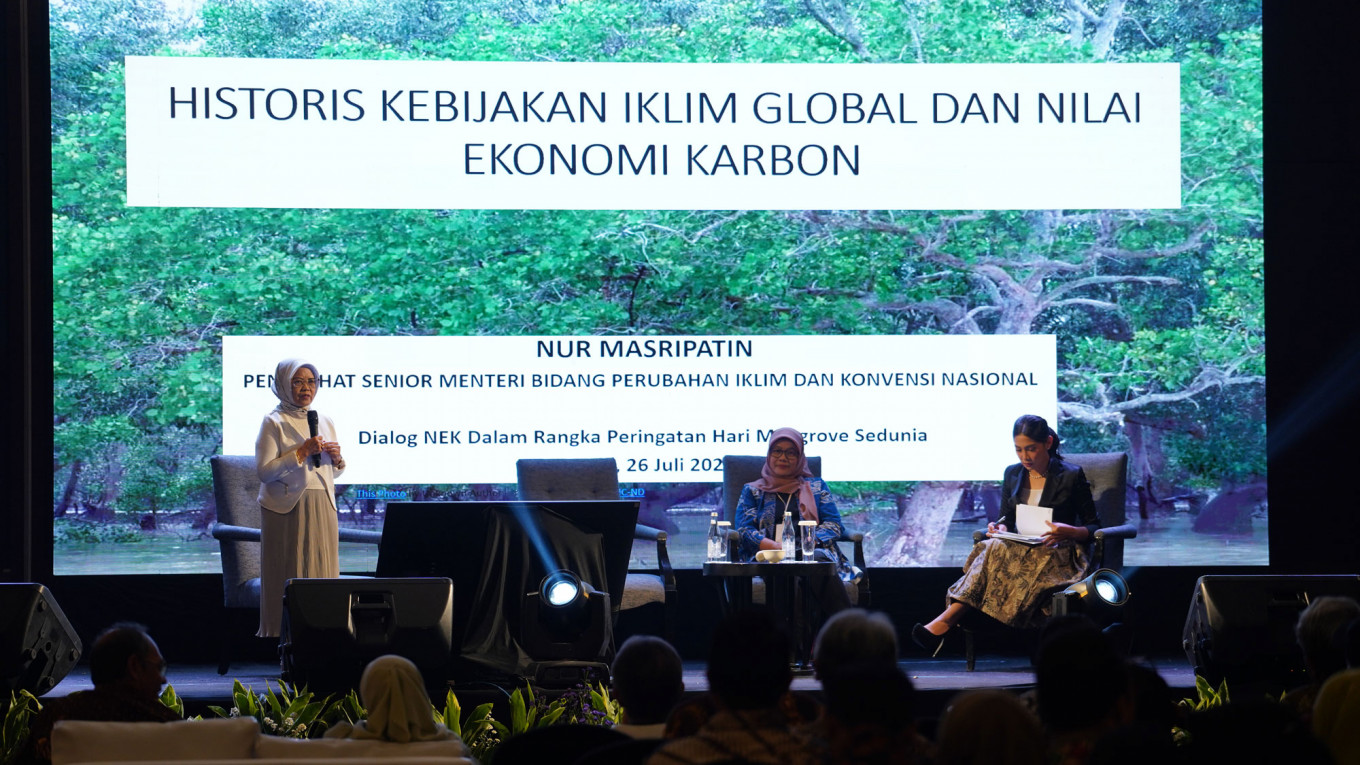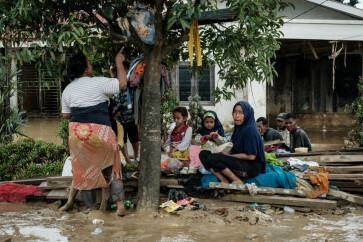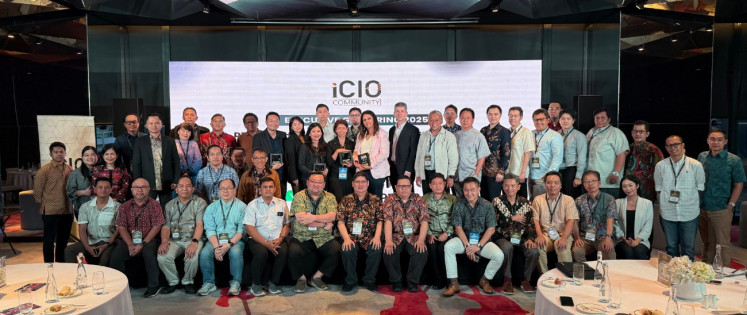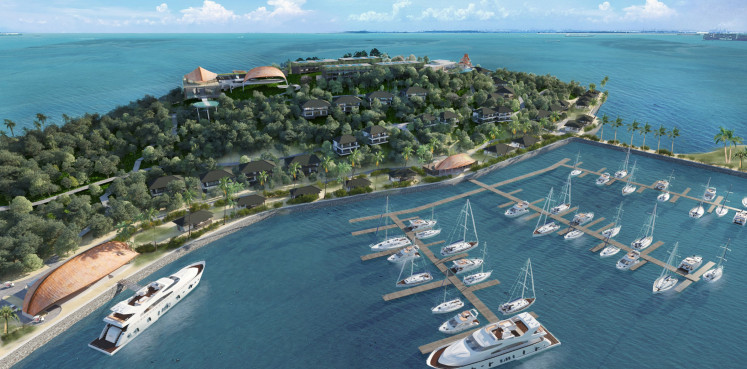Popular Reads
Top Results
Can't find what you're looking for?
View all search resultsPopular Reads
Top Results
Can't find what you're looking for?
View all search resultsEconomic value of mangrove carbon inseparable part of climate change mitigation
Change text size
Gift Premium Articles
to Anyone
D
espite high economic value of mangrove carbon, priority should be given to mitigation and adaptation to climate change through mangrove conservation and restoration endeavors.
Laksmi Dewanthi, director general of the Climate Control at the Environment and Forestry Ministry, noted that economic value of carbon (NEK) was inseparable part of Indonesia’s strong commitment to climate change agenda, especially climate change mitigation.
The economic value of carbon was governed in the Presidential Regulation No. 98/2021 on the Implementation of NEK for Achieving National Contribution Targets and the Control of Greenhouse Gas Emissions and National Development.
“So, the goal is not merely to seek economic benefit. Yes, it may have an economic value that can be an added value that can be an incentive for those engaged in conducting migration efforts, whether it is through carbon, emission trading, or performance payment. This only occur only when we mitigate climate change,” she said.
Laksmi spoke in the public dialogue held by the national Peatland and Restoration Agency (BRGM) in conjunction with the celebration of the World Mangrove’s Day themed ‘Mangrove for the Future’ in Jakarta on July 26.
The second public dialog with topic ‘Economic Value of Carbon in Mangrove Ecosystem Management’ also featured Nur Masripatin, a senior advisor to the Environment and Forestry Ministry’s International Climate Control and Conversion Division, and Virni Budi Arifianti, a researcher at the National Research and Innovation Agency (BRIN).
According to Laksmi, the Operational Plan of Indonesia's Agriculture and Forestry and Other Land Use (FOLU) Net Sink 2030 is directed to reach an emission level at minus 140 Mt CO2e by 2030.
Based on Indonesia's Enhanced NDC in 2022, energy, waste, industry processes and product use and FOLU which include mangroves closely related to the adaptation to the climate change, according to Laksmi.
Indonesia is home to 3.4 million hectares of mangroves, harboring about 23 percent of the world’s total, and is the most diverse with 92 true mangrove species.
Nur Masripatin said that in the context of economic value of carbon, “we see spaces for mangrove funding. From climate regime, there is red+ in which Indonesian mangrove is included. There is also biodiversity fund, philanthropy and etc,” she said.
She also underlined the importance of mitigation of climate change because the damages to the coastal areas due to the mangrove loss would severely affect Indonesian economic resilience. “Many coastal communities rely heavily on natural resources,” she said.
Virni Budi said that with regard to economic value of mangrove, the issue should not be focused on the economic value of mangrove, the non-economic value of carbon was also no less important, especially for climate change adaptation.
Quoting the outcomes of a research by World Bank, she said that mangroves provide valuable ecosystem services that contribute to human wellbeing in Indonesia, including coastal protection, climate regulation, fisheries support services, raw materials provision and cultural services. “On average these sets of services yield US$ 15,000/ha/year in benefits, but some provide benefits totaling nearly $ 50,000/ha/year,” she said.
She pointed out that BRIN had conducted research on how much value of contribution with regard to mangrove ecosystem to mitigate climate change.
“The research has found that the value of contrition to mangrove ecosystem mitigation by replanting (restoring) mangrove trees is 4 times lower than by conserving the existing mangroves,” she said.
“Therefore, the best things we should do is by combining restoration and conservation efforts,” she noted.
Shifting in land function was a major issue as the conversion of the mangrove land, most commonly, into shrimp ponds, will lead to carbon formerly tightly stored in the soil for hundreds of years being released to the atmosphere.
A study on the impact of the land shift on carbon stock in Mahakam Estuary, in East Kalimantan, has found that almost 50 percent of the carbon stock stored in the estuary disappeared due to being converted into shrimp ponds. “About 80 percent of carbon stock stored in the soil. It will need 226 years to restore the former pond land,” she said.
Based on the BRIN’s calculation, the carbon footprint of 1 kg of shrimps produced in the pond, former mangrove land, is equivalent to emissions result from the burning of 2,000 liters of gasoline, according to Virni.
Mangrove ecosystem was highly valuable tool to mitigate the impacts of climate change by resiliently reducing the amount of carbon dioxide in the atmosphere because the carbon that's stored in mangrove ecosystems could remain sequestered for hundreds to thousands of years.
“So, we have to be careful with mangrove ecosystem. However, information about how the carbon cycle itself is still lacking. Mangrove ecosystem comprises not only carbon stock which can release through respiration but also carbon exported to seas or rivers. This is a homework for researchers and academicians to provide complete information on the carbon cycle,” she said.
Asked how old could mangrove trees absorb carbon optimally, Virni revealed that based on research on the issue in Malaysia, mangrove trees aged between two and five had high level of absorbance. “However, older mangrove trees are much better in terms of carbon storage,” she said.
BRGM chairman Hartono Prawiraatmadja said that economic value of carbon was part of the benefit of mangrove forest management.
Mangroves absorb and store carbon up to 5 times more carbon than mainland tropical forests.
“What is counted on the economic value of mangrove carbon is not the sale of the stock, but efforts to maintain the carbon stock or increase its absorbance by involving the communities,” Hartono remarked.
Hartono adds “we conserve the remaining mangroves which are also very important and have a high value in their mitigation contribution to climate change. So what we do is to combine rehabilitation efforts with defencing the existing mangrove in a landscape”.










